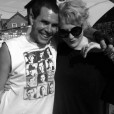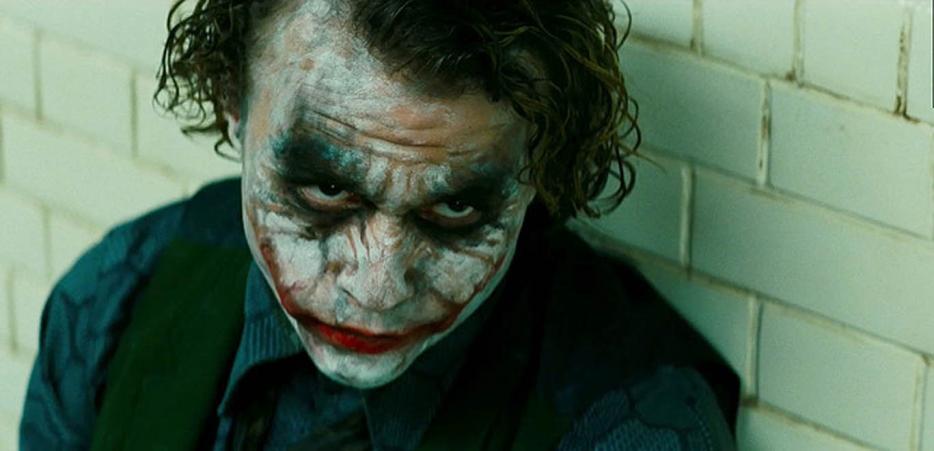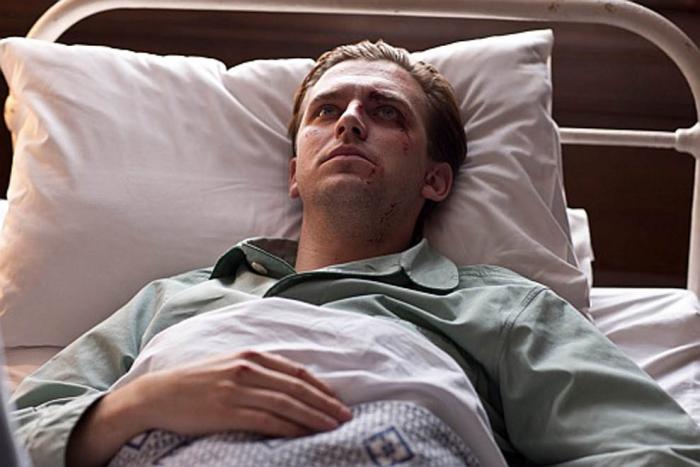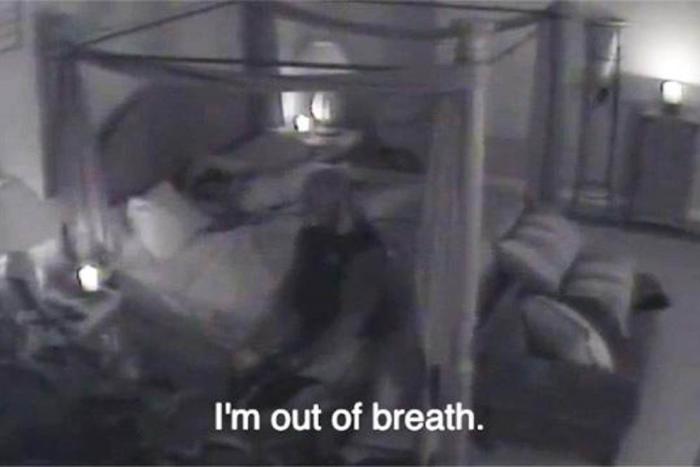Consumed with foreboding, the cryptozoologist, Loren Coleman, in 2004, published The Copycat Effect, a book subtitled “How the Media and Popular Culture Trigger the Mayhem in Tomorrow’s Headlines.” Earlier this year, having tracked the atmosphere around and occurrence of Joker-wannabes since 2008, Coleman predicted a violent event around the impending release of The Dark Knight Rises.
Whether he is a crank or not, Coleman may very persuasively view James Holmes, the 24-year-old who back in July opened fire on cinema-goers as they waited to watch a midnight screening of The Dark Knight Rises, as a cryptid—a known-yet-formally-unrecognized creature. In this case, Holmes is a clear product of his ardor for the Joker, a shambolic, suave nihilist; a highly rational, heartless freak. His actions that night were clearly related to his identification with the Joker, or another, if huge and luminous, outcast.
Holmes, who is charged with murder and attempted murder after 12 people were killed and another 58 wounded (including children) in the Aurora, Colorado shooting, is deep into his pre-trial at the moment. His hair is still an incendiary-orange; his eyes are perpetually widened, like an incredulous, wounded Bambi. Details of his life, prior to the crime, are lighting up the news, including a possibly lurid diary; a Batman mask, seen in his apartment; and his short tenure as a student of neuroscience.
Yet we are so careful to spare the film from any blame. We acknowledge, always, the power of art (when we laugh, cry, are injured) without acknowledging the complex nature of power itself.
Sometimes, art begets violence. A Clockwork Orange’s scenes of milk-white psychopaths in black jackboots, raping and torturing people in stark, minimalist sets, were so seductive, there was an outbreak of copycat violence in England, in 1971. After the movie Fuzz was released in cinemas the following year, and again later, when it was shown on TV, actual people were burned alive. The film involves tracking down a killer who is immolating homeless people.
Years ago, identifying the cryptid that is the cinema-copycat killer was haughtily referred to as a Monkey-See, Monkey-Do model.
But monkeys see and monkeys do, and if the right components are in place; this rather elegant formula also applies to people. Substitute bananas and teeth-baring for a young adult human male with a certain neurological predisposition regarding a slick, cinematic killer and there you have it.
This sort of thinking, again, inflames people. When music was thought, in the aftermath of the Columbine killings, to cause violence and self-harm among teens, Eminem stanched the flow of this argument by rapping, of a kid “getting bullied” who “shoots up the school,” by asking “Where were the parents at?”
Parents of teenagers got told, but are still not fully accountable. Accountability, in this case, is like shrapnel fire: diffuse and difficult to enumerate.
*
But there is a point of origin. The shootings took place at the Century 16 movie theatre. By way of analogy, I present to you, the Black Death.
During the pandemic’s second stage in the early 16th century, the Black Death killed more than 30,000 people in London. Its treatment was tragically erroneous: sufferers were instructed to ingest crushed emeralds, their own urine and ten-year-old treacle; to place a live hen (thought to be able to absorb the pestilence) beside their boils or to lance them, then medicate the wounds with human excrement. They were bled and told not to sleep or entertain unhappy thoughts.
A great fire took care of the fleas and rats drinking the blood of plague victims, but what are we to do about the sort of sickness that led to the Century 16 shooting?
When the murders occurred, eye-witnesses were quoted, and somewhat derided, for saying—after seeing the Joker dressed in tactical gear open fire on them—that the event was unreal; that this was “like a movie.”
Like the Batman and Dark Knight movies, to be precise. Vile mayhem committed against large groups of people is a signature of both series: think of Heath Ledger’s definitive Joker, dressed fetchingly in a pink-tab-collared, tightly belted nurse’s mini-dress, skipping away from a detonating hospital.
Think, specifically, about Heath Ledger, the actor, and Holmes’s style-herald.
On July 11, 2008, shortly before the release of The Dark Knight, Entertainment Weekly published a rave review of Ledger’s performance in a piece called “Batman: Triumph & Tragedy.”
Ledger had been dead almost a half a year: on January 22, he was discovered in his NYC home, apparently the victim of a prescription pill overdose in spite of images and footage of the raddled actor, before his death, with a virtual gorilla on his back.
The magazine refers to his death as a “blaze of glory,” the same term Nancy Spungen uses in Alex Cox’s 1986 film, Sid and Nancy. Or rather, shouts, in her grating way: allegedly, this 20-year-old begged her degenerate boyfriend to stab her in the stomach with a buck knife for the glorious aftermath.
This notion is a small part of American cinema’s (via Britain in this case) passion for violence-as-beauty. Think also of (this is TV, but TV-as-film) Breaking Bad’s 2012 season, of the operatic string of prison stabbings, executed as though the knives were violin bows. Of how indebted this sequence is to the series of vivid, Weegee-like still-lifes of dead gangsters in Goodfellas, set to the sweet instrumental in “Layla.” Or, to the finales of all of the Godfather films (one takes place during an actual opera, “Cavalleria Rusticana”), which are so passionately gruesome, they are almost sexual, and always as showy as Imagist poems. (Consider Moe Green’s eye exploding, in the first Godfather, like a rose hyper-blooming, like a symbol of the rise of the viewer’s role in, and engagement with, the on-screen violence.)
Not content with merely stylizing violence, American cinema, and its viewers, place a grotesque amount of faith in the idea (usually attributed to James Dean) first espoused in 1949’s Knock on Any Door, that it is the height of fashion to “die young” and “leave a good-looking corpse.”
James Holmes obviously embraced this philosophy by coloring his hair, and dressing in the tight, chic black that characterizes legitimate, or professional and stealth cinematic killers.
This otherwise unimpressive young man, in other words, became genuinely stylish that dreadful day. A fledgling neuroscientist, he likely understood the philosopher and neurobiologist Ludovica Lumer’s idea that “Most of what we do when we decide what to wear, or what not to wear, is motivated by some kind of feeling. To choose what to wear is to trace the identity of the person you are becoming, to take out a search for your person.”
Holmes, it seems, was seeking out the doubled identity that is Heath Ledger AND the Joker, the disquieting, sexy hybrid that virtually tears open The Dark Knight with his vast, chic presence: his hair is bleached and filthy, but it falls artfully to his shoulders and in and out of his black-ringed eyes; his purple and green suit and diamond-patterned shirt, his entire aesthetic is the abject Alexander McQueen via a young, pretty Alice Cooper.
When he looms over Maggie Gylenhaal’s helpless character (Batman’s erstwhile girlfriend), the sexual tension is palpable. And when he sits in his cage at the police station, he is simmering with “ultra-violence,” the stylized, sexual crimes of A Clockwork Orange, which Ledger watched the day he shot the jail-cell scene.
Yet, if Alex took actual pleasure in sexually assaulting and murdering people (while “Singing in the Rain,”) Ledger’s Joker feels nothing at all—he claims to enjoy his own knife-work yet he is only seen shooting people who get in his way with zero hesitation or affect. Ledger’s decision here is revolutionary: it is hard to think of murder absent of personality in film, absent even the modern sideways-shooting of the otherwise cold-blooded assassin.
The killers in The Godfather shot like the Joker, because it was “business.” It is this loathsome corporate idea that Ledger re-enacts in the film, but its message is lost in the haze of his radiant performance.
To watch him kill is to know that murder is banal and related to obstacles or money; yet to watch him emote is to understand, as Bruce Wayne’s wingman, Lucius Fox observes, that “some men just want to watch the world burn.”
In other words, it is not the Joker’s crimes that appeal to disenfranchised, desolate young men (in Maryland and Maine, respectively, two other men were apprehended in July, heavily armed and dangerously referencing the Joker,) but his sad nihilism, how he flinches when he is called a “freak.”
*
In the immediate aftermath of the Aurora shootings, The Dark Knight Rises continued its run—heartlessly and without pause—but the film never acquired the cachet that Ledger’s death gave its preceding entry in the series.
Returning to the world in flames: we have yet to confront this mass-murder as, essentially, a style event, a real-world performance of a virtual style-extravaganza. To address, with conviction and a plan, this aspect of art’s power.
Stanley Kubrick saw the sick beauty of his own Clockwork Orange, a high-fashion nauseant based on a book about the extremes of power corrupting crime and punishment, absolutely. The aforementioned copycat violence that marred the film's initial release led Kubrick to withdraw the film from theatres, where it remained, in abeyance, for 25 years.
It was a starkly moral act. Kubrick may or may not have been acknowledging his own role in the film’s wildfire aspect, but was, absolutely, declaring that the mere possibility was abhorrent.
Many critics (some on parade in the documentary Still Tickin’: The Return of a Clockwork Orange, a modern examination of the ban) continue to deny that cinematic violence causes actual violence.
But it does. Circuitously, perhaps. Definitely, though, and Kubrick’s lone act of assuming some responsibility is heroic. (Listen, on the other hand, to Malcolm McDowell happily going on about the film: “The violence is not naturalistic, it’s stylized and, really, hilariously funny—if it wasn’t for the raping and beating.”)
More than two decades after A Clockwork Orange, Oliver Stone released Natural Born Killers, a film that features a pair of killers who virtually define outlaw haute couture. But Stone refused to connect the same dots as Kubrick, in spite of a mini-epidemic of Mickey and Mallory-style crimes.
Was Stone accountable? As an artist, no. The same applies to the work of art—in this case, a fluid artifact—that he created.
But as a man, he bears responsibility for not acknowledging the cause-and-effect inherent in the copycat crimes, however gray the area. Simply put, if someone flicked a lit cigarette to the street and walked away as it happened to ignite a gasoline-soaked rag, a pile of debris, an entire street, he or she may not be directly, knowingly or criminally responsible, but the fact remains that this slight, careless action made the inferno.
In Alan Moore’s 1988 graphic novel The Killing Joke, upon which The Dark Knight is based, the Joker argues that it only takes “one bad day” to induce madness, or complete chaos.
Or one bad action.
Watch Heath Ledger, anxious and twitching, talking to reporters about his Joker on any number of YouTube videos. He calls the character a “pure anarchist,” and says and says again that he had “the most fun I’ve ever had.” He says this as he rubs his arms together and averts his eyes like a trapped animal.
He knows he has completed the performance of his life.
Life is a “black, awful joke,” Moore’s Joker says. Imagine inhabiting this character so absolutely.
Was Dark Knight director Christopher Nolan, who worked closely with Ledger on the conceptualization of Ledger’s character, nervous to release a film featuring, effectively, the almost irresistibly beautiful death-in-progress of his star? To unleash this star’s acute vision of depression amplified into psychopathy; of incensed Otherness inflated by sexual charisma? (Among the most salient entries in the Joker record is a series of fan-tributes to the killer clown “bringing sexy back”—they are collages of the mutilated lunatic set to boudoir music and hemmed with confused assertions about his hotness.)
If he wasn’t, Ledger’s death should have given him pause: had he dug too deep, or was he simply not well enough to explore, in his own words, such a “sinister” villain? Or worse, such a pyrotechnically alluring one.
Yet to express one’s discomfort with the fusion of style and crime in art (expressed/represented so well in the camp film masterpiece Lipstick, in Eyes of Laura Mars, or the entire oeuvres of Jean Genet and John Waters) is to be suspiciously regarded as a possible threat to a freedom that is, ultimately, illusory to begin with (please note that Holmes’s college application essay focused on reality and illusion).
We, categorically, do not live in absolute freedom. We do not freely screen images of child pornography; of bestiality; of snuff (well, that last item is a little trickier, given Luka Magnotta, the fashion-model-cannibal’s, widely available film of his alleged torture, rape and murder of Jun Lin.)
And we should have stopped The Dark Knight in its tracks after Ledger’s blaze of glory, sad, lonely death.
Meaning Nolan should never have proceeded; meaning he is horribly remiss for not pulling it from theatres; for not, at the very least, opening a dialogue for, say, the kind of wretched, homely man—Neil Truscott—who was apprehended with an arsenal and slaughter-plan in late July, claiming he was “the real Joker.”
And Truscott, like another Joker-pretender also captured in July, Timothy Courtois, is called a “Holmes-copycat” by an oblivious media. The Dark Knight features a pathetic gang of social misfits dressed as Batman, one of whom the Joker rounds up and tortures to death. Because he, oddly enough, is entirely aware of Batman’s malignancy; of his—and his fans’—culpability in the deaths of innocent people.
“I believe whatever doesn’t kill you simply makes you stranger,” Ledger’s Joker says.
How much stranger do things need to get?
A cartoon character’s wan doppelganger is about to be tried for 24 counts of first degree murder and 116 counts of attempted murder, as grieving persons mill around the courthouse in comic book iconography.
What can we do?
A cabal of criminals asked the same thing in The Dark Knight, and the Joker had, in the manner of Occam’s Razor, a very simple solution.
“Kill the Batman.”






